Creating an email marketing plan is one of the best and most effective to increase awareness of your products or services. With active email accounts nearing the $5.6 billion mark by 2019, email is an excellent way to deliver your message to customers and potential buyers.
Plus, email marketing beats social media marketing by a landslide for gaining new customers. And if you couple that fact with email’s outstanding ROI, email marketing is a winning solution for digital marketers.
We’ve put together a guide that will take you through the basics of an email marketing plan, so you can easily get your next campaign started.
Get results with our simple email marketing plan
Since there are multiple ways to build an email marketing plan, we’re going to break this tutorial into a few simple tasks.
Step 1: Getting personal
Today’s consumers want relevant, on-target content, and they want (and expect) that content to be personalized to their interests.
Personalization is powerful. Over 40% of customers claim to have cut ties with a company due to lack of personalization. In other words, customers don’t trust brands that don’t know them.
Customers want to feel like people, not just sales prospects.
An email marketing plan is perfect for designing warm, personalized campaigns that drive engagement, loyalty, trust, and finally, revenue. To personalize your campaign, you’ll need to learn about your customers. And to do that, you should implement segmentation.
The importance of segmentation
Like personalization, segmentation is incredibly valuable. Email marketing provides a healthy ROI, and 77% of that ROI comes from segmented, targeted, and triggered campaigns.
Segmentation is simply grouping your target audience into sub-niches based on demographics, behaviors, or other criteria. Examples of ways to segment include, but are not limited to:
- Gender
- Age
- Persona
- Industry
- Hobbies
- Geographical location
- Education level
- Past purchases
- Purchasing behavior (heavy vs. light purchasers)
- Interests
- Content topic
- Interest level
- Change in purchasing behavior
- Stage in the sales funnel
Learn more about increasing engagement with list segmentation.
Simply choose the segmentation type that makes sense for your data and marketing goals, then, start sorting.
Once you’re ready to send those targeted, segmented emails, don’t forget to apply personalization.
This can be as simple as personalizing an email with your customer’s name, or the personalization can go even more in-depth. For instance, campaigns often provide suggestions for future purchases, customer location, and more.
Let’s look at examples of each. Here’s a simple, personalized email found on ReallyGoodEmails. Notice the combination of helpful information and personalization.

The email below uses personalization and segmentation to address the weather in this target customer’s location.
Once again, personalization and segmentation illustrate how successful they can be when applied to email marketing.
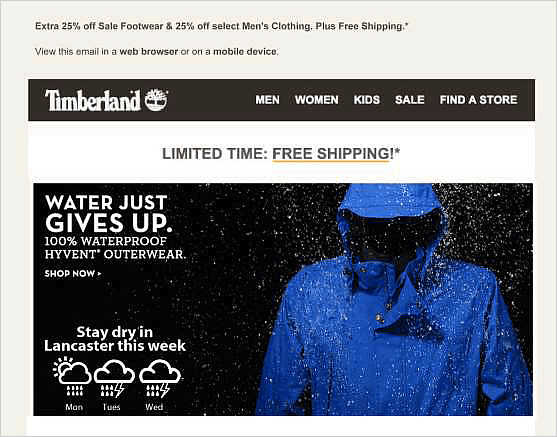
Adwordsrobot
Whatever your preferred method, applying personalization and segmentation will boost both click-through and open rates. Additionally, this extra step will make your customers feel like people rather than prospects.
Step 2: Scale your efforts with automated emails
Automating your email marketing plan is another way to show personalization with your customer, further establishing trust and engagement.
Setting up automated emails triggered by your customer’s (segmented) behavior allows you to craft a personal experience. This experience provides your audience with the right message at the right time.
Ways you can automate
To be as effective as possible, you’ll need to integrate your website with your ESP.
Welcome emails
We recommend starting with series of welcome emails to engage and onboard new subscribers or customers.
Here’s a great example of a welcome email that expresses gratitude for a customer’s opt-in—and this email includes a valuable discount, too. By including a valuable offer in the first email, you can build excitement and encourage customers to continue checking their inboxes.
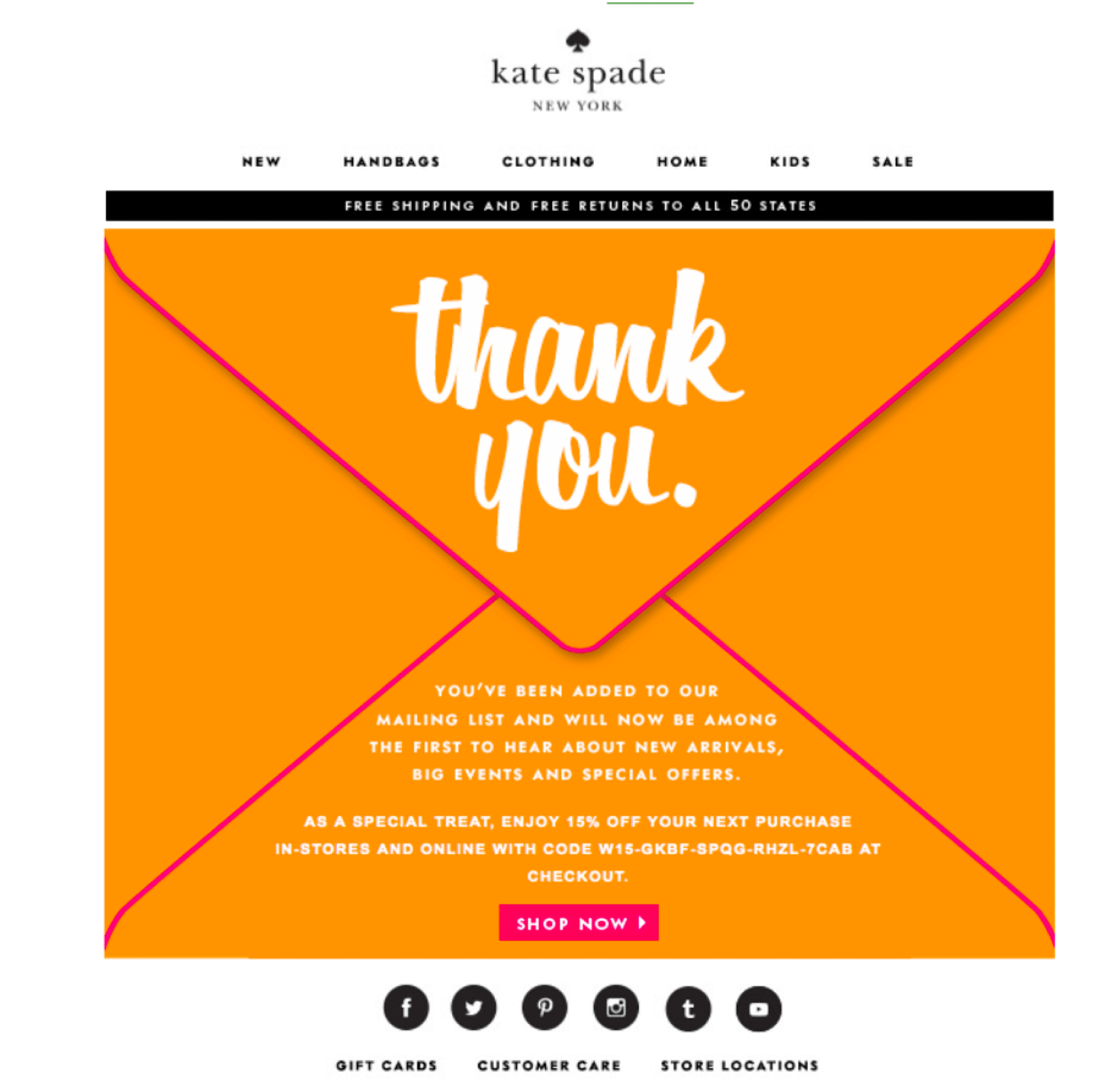
Not only is Kate Spade’s welcome email delivering value, but it’s also simple, striking, and to the point. Notice the easy-to-see call-to-action that makes reconnecting easy.
Behavior-based automation
After you’ve welcomed your customer to the fold, create a series triggered by behaviors, such as purchases, birthdays, or even customer contact anniversaries to heighten contact and keep engagement fresh.
Here’s a perfect example of an email that celebrates one year of doing business with a customer:

Really Good Emails
Emails like these honor your relationship and let customers know you’re paying attention.
Nurture and re-engage
Finally, complete your plan using some ongoing emails that will nurture existing customers and re-engage those who’ve drifted. Here are some examples of re-engagement emails that work.

Lowe’s is pushing re-engagement by focusing on improvements that will make shopping easier.
And Urban Outfitters, below, has an on-brand, trendy way of re-engaging subscribers:
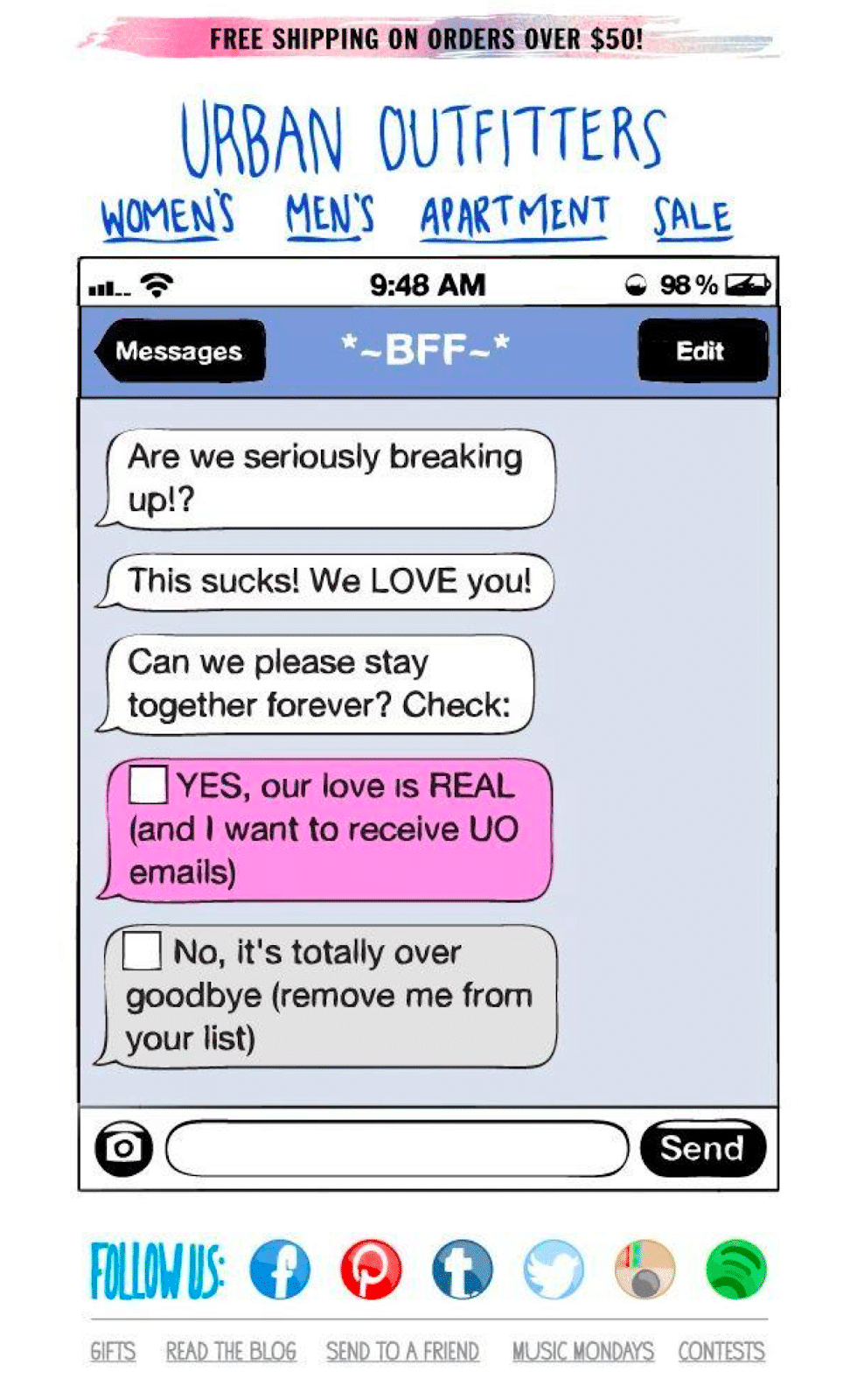
This email is funny, to the point, and, above all, effective.
Step 3: Growing your email list organically
You want strong, organic growth when it comes to your email list. To encourage this type of growth, you can leverage your website for organic impact.
How to build your list
One of the best ways to jump-start list-building is through high-quality, relevant content specific to your audience—and you want to provide it often.
You can do this on your website and follow up with emails that let customers know how to engage and receive these goodies. The examples below illustrate this concept:

Search Engine Journal
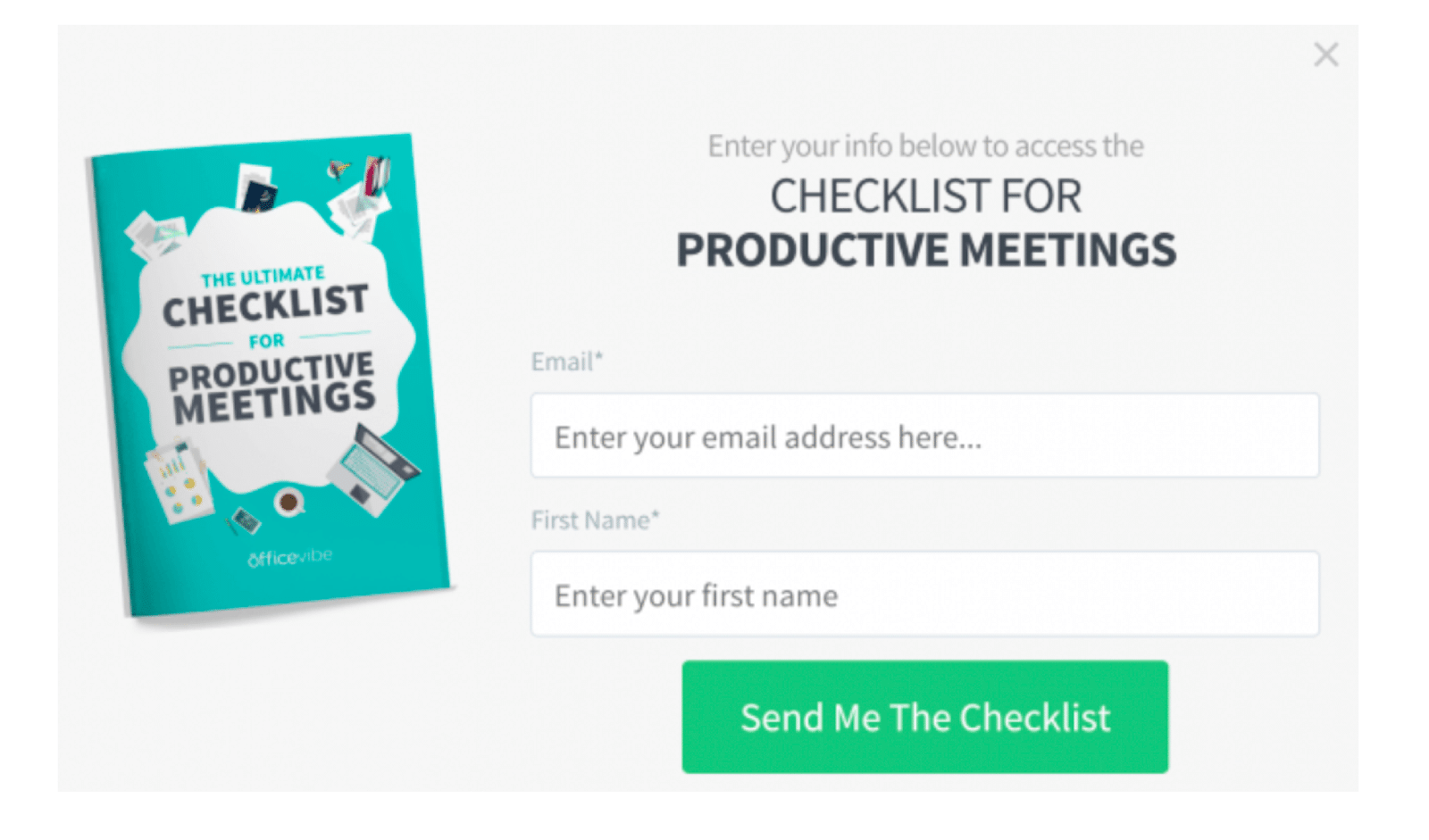
Search Engine Journal
Additionally, here a few other creative ways to start growing your list:
- Providing links to social media and incentives to share
- Using high-value offers like ebooks and webinars for opt-in enticements on your site
- Using subscriber-only discounts and allow an opt-in to subscribe
- Running contests and competitions
- Offering hot content via a newsletter that must be opted-into
You can also offer white papers, run quizzes, or employ any number of ways to capture customer attention and subscriptions.
Step 4: Focus on life-time value
Email list growth is essential, but retention is just as valuable. This is particularly true since every customer has a lifetime revenue value when subscribing to your brand.
Customer lifetime value (CLV) is the term used to define that value of your future relationship with your prospects.
How to calculate life-time value
CLV is calculated by multiplying purchase frequency by the value of the average order. So, if a customer’s average order is $50 and he buys from you three times per year, then his value per year is $150.
That can add up to a lot of revenue over several years, and all you have to do is keep that customer engaged and happy.
Retaining customers
Retaining customers is also more cost-effective than attracting new ones. In fact, 80% of future revenue will come from 20% of your existing customers. So, keeping those customers is vital.
Adding triggered email automation to your email marketing plan is a great way to nurture those assets. And increasing retention rates will improve your profits by anywhere from 25% to 95%.
Here are some great examples of automated emails. You can incorporate these email marketing strategies when retaining and nurturing customers.
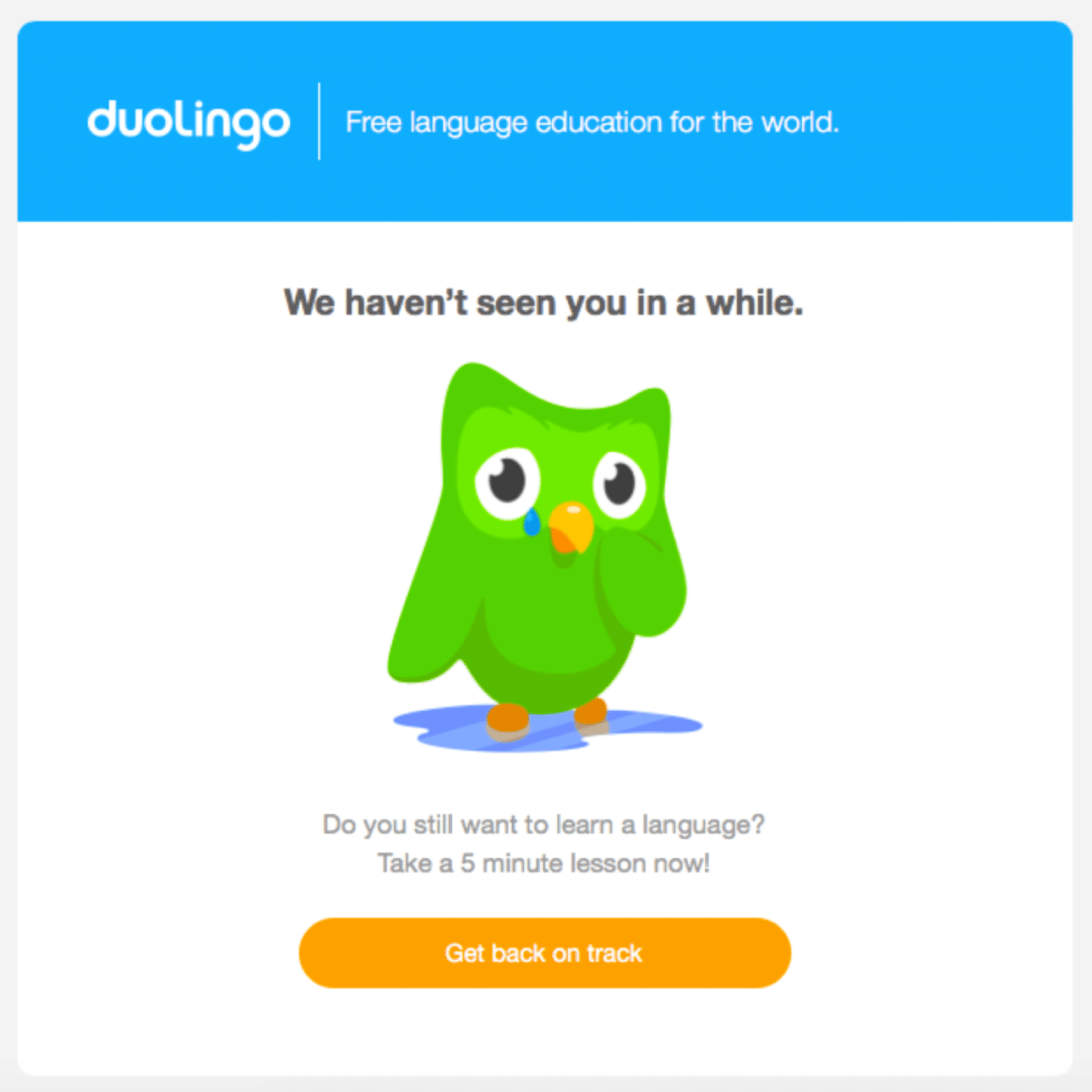
Success Agency

Really Good Emails

Really Good Emails
Whether you’re re-connecting, enticing, or letting your customers know some good news about your brand, staying in touch is critical for customer retention.
Wrap up
If you’re offering—or planning to offer—a product or service online, email marketing should be part of your digital marketing strategy.
You now know how to take a fledgling plan and turn it into a robust strategy. Through personalization, segmentation, automation, and retention, you will maximize results—and profits.
By following the above steps, you can ensure your email marketing plan meets three intrinsic goals: connection, engagement, and nurturing customers. This will build loyalty, trust, and revenue into the future.





